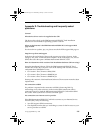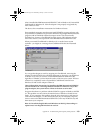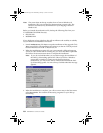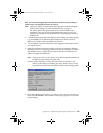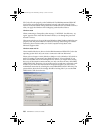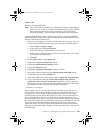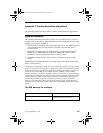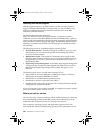Appendix D. Troubleshooting and frequently asked questions 239
Windows XP
Windows XP bandwidth issue
Note: This information is provided "as is". IBM does not take any responsibility
for the accuracy of this tip. Furthermore IBM does not accept any liability
for any damages that might arise for using this tip. This tip has been
retrieved from http://www.tweakxp.com. The article can be found here.
When installing Windows XP it will take away up to 20 % from the bandwidth
when using Dial-Up Networking. This will help increase your bandwidth for any
network connection in Windows XP.
1. Make sure your logged on as actually Administrator. Do not log on with any
account that just has administrator privileges. To log in as an administrator:
•Click on Start -> Logoff-> Logoff
• In the logon screen hold Ctrl+Alt+Del
• In the user field type 'Administrator' (case sensitive).
• In the password field type the password for the administrator (if you don't
have one leave this field blank)
•Click OK.
2. Click on Start -> Run -> Type gpedit.msc
3. Expand the Computer configuration branch
4. Expand the Administrative templates branch
5. Expand the Network branch
6. Highlight the QoS Packet Scheduler in the left window
7. In the right window, double click the limit reservable bandwidth setting.
8. On the setting tab, check the enabled item.
9. In the Bandwidth limit % field, enter 0. Click on Apply, OK, Exit gpedit.msc .
10. Go to your Network connections (Start->My Computer->My Network
Connection-> View Network Connections). Right click on your connection,
choose properties then under the General or the Networking tab (where it lists
your protocols) make sure QoS packet scheduler is enabled
11. Reboot your computer.
This is largely a way to "counter what XP does". In other words, XP seems to
want to reserve 20% of the bandwidth for itself even with QoS disabled. So you
can use this to your advantage. To demonstrate the problem, start up a large
download from a server with an FTP client. Try to find a server that doesn't max
out your bandwidth. In this case you want a slow to medium speed server to
demonstrate this. Let it run for a couple of minutes stablize. Then start up another
download from the same server with another instance of your FTP client. You will
notice that the available bandwidth is now being fought over and one of the
downloads will be very slow or both will slow down when they should both be
using the available bandwidth. Using this "tweak" gives both clients a fair share of
the bandwidth.
ISDNmst.fm Page 239 Wednesday, January 15, 2003 9:22 AM



